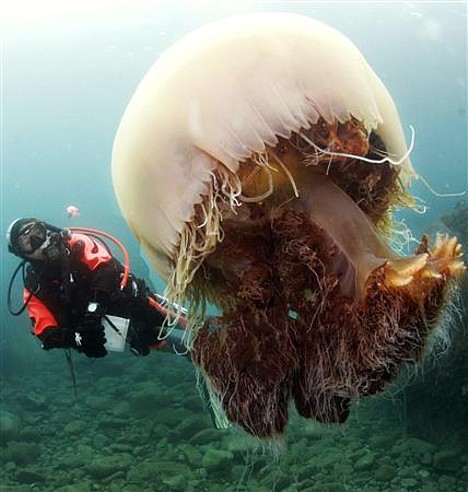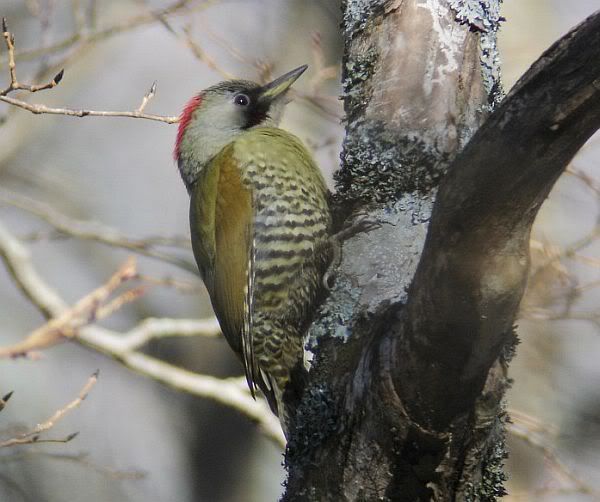 |
|
|
||||
|
野生動物の日本: News and oddities about wildlife in Japan -
02-04-2010, 11:55 AM
Not entirely sure where to put this thread, but I thought it might be interesting to share some bits and bats about Japan's flora and fauna I've come across.
大山椒魚 Oosanshouuo  It's up to two meters long, has been around unchanged since the time of the dinosaurs and, according to some, smells a bit like rhubarb. It is of course, the Giant Salamander; a creature that has become something of a curio both in Japan and abroad. Covered in warts and able to deliver a seriously nasty bite, it's rather at odds with Japan's 'cute' culture, and perhaps unsurprisingly, until recently has been largely ignored as the poster boy of conservation. Threatened by pollution, silting and poaching, the Oosanshouuo is now considered a vulnerable species and is listed as 'near threatened' by the IUCN. However, the fight for the preservation of the giant salamander might be about to receive an unexpected boost as the Oosanshouuo itself is revealed to be a key to the conservation of other amphibian species. The chytrid fungus poses a real threat to some frog species as it is lethal to many and has been responsible to putting dents in vulnerable populations world wide. It's nasty stuff, invading the skin of it's victim and to all intents and purposes smothering it to death by interrupting movement of water and oxygen. Up until now, it was thought to have come from Africa, however, last year it was discovered that the fungus resided also on the skin of the giant salamander, particularly in new strains, and that there it was completely harmless. As the BBC reports: "It appears likely now that studies of the Japanese giant salamander can expand the number of chytrid-fighting bacteria known to science, and so extend the options for developing treatments for an infection that currently cannot be controlled in the wild. But that can only come to pass if the giant salamanders endure; something that is not guaranteed, with the challenges they face in modern Japan including, perhaps, new strains of chytrid itself. There is as yet no modern hero able to still the pace of habitat loss or prevent invasion from rival species." More articles, pictures and videos here: BBC News - Close encounters with Japan's 'living fossil' WTF Nature on Livejournal ( |
|
||||
|
02-05-2010, 09:46 AM
パンダパウアー!
It's the year 2050 and Mr Yamada has received his bank account summary. He checks to make sure the last utilities bill was paid properly. He frowns. There's no name of a gas company on there, or an electrical company either. Then he relaxes. There it is~ "Food Processing Co," followed by a low debit from the account. It's low, naturally, because it's all garbage anyway; and it's all thanks to the pandas. Life is good. Alright, so it's 2010 and the idea of panda's somehow recycling food waste into electricity for the world is fairly preposterous, but if one Professor. Fumiaki Taguchi can just figure out the hydrogen power cell problem, it's an entirely feasibly reality. It all started in 1998, when he wondered about the giant panda's ability to eat bamboo. It's mostly woody material, and teeth asides, what about the giant panda makes it so equipped for such a difficult dinner? Whereas most people would stop there, Prof. Fumiaki Taguchi instead took himself off to Ueno zoo and borrowed all the panda poo that they could supply in order to seek out the dirty truth. It was a bacteria. The daddy of all digestive bacteria which could break down hardy bamboo and just about anything else besides. When put into a 100KG container of garbage, it took but 17 weeks to break it down to just 3; a significant improvement on currently available commercial waste bacteria. What's more, the missing 97KG had become nothing but water and carbon dioxide, however Prof. Fumiaki Taguchi also says that by combining this research with his previous studies in, wait for it, termite saliva he can change the by product into hydrogen instead. So there you have it; Japan, some panda poo and and a drooly termite may be on the verge of solving the world's energy crisis. And taking out the trash to boot. Sauce: Panda-poop prof scoops Ig Nobel honor | The Japan Times Online Ig Nobel Prize: Panda poo power ::: Pink Tentacle |
|
||||
|
03-05-2010, 02:23 PM
越前クラゲ or Nomura's Jellyfish
 Last year the Sea of Japan came under invasion. Scores of these huge jellyfish, sometimes cited as the second largest in the world, were swept into Japanese waters having bred in great numbers in waters around China and Korea. Only identified relatively recently as a new species, they're causing havoc to Japanese fishing boats, tangling nets and in once case, causing a 10-ton fishing vessel to capsize. But if you're worried about taking a swim with a monster jelly the size of a refrigerator and weighing up to 300 pounds (that's the same as your average sumo wrestler), you can relax; their sting is unpleasant but by no means fatal and more importantly, some clever school children have come up with a tasty solution. You'd be forgiven for thinking of sushi, but the students of Obama Fisheries High school are using jellyfish powder to make confectionary, mostly caramel and cookies. And if that wasn't mind-boggling enough, astronauts in space could be pitching in if the caramels are put on the menu. Nomura's jellyfish - Wikipedia, the free encyclopedia Japanese Fight Giant Jellyfish Invasion With Jellyfish-Infused Space Candy | Sustainability | Fast Company |
|
|||
|
03-05-2010, 04:14 PM
タカアシガニ/Japanese spider crab
タカ means toll. アシ means the foot. ガニ means the crab.  The world's largest crab. BBC News - Giant spider crab set for Birmingham sea life centre Japanese spider crab - Wikipedia, the free encyclopedia |
|
||||
|
03-21-2010, 11:57 PM
緑啄木鳥(あおげら/きつつき)The Japanese Green Woodpecker
Now this won't be anything new to watchers of QI, but there's something quite special about this little bird:  Photograph © Osamu Aoki Aww, isn't he the cutest? Doesn't look particularly weird at all does he?  So what the hell is that!? That, ladies and gents, is a typical woodpecker tongue- a barbed grub-spearing harpoon and not only is it spiky, it's often sticky as well. Woodpecker saliva often has more in common with glue than spit. Just the thing for picking up ants. And it gets weirder still. Some woodpecker species have sensory organs on the tips of their tongues that help them locate tasty morsels hidden deep within the wood they drill. Dabbling around with it, they can hear the little scritchy noises bugs make as they feast on the insides of the tree. That's right, hear. To all intents and purposes, woodpeckers have a third ear on the tip of their tongue. But the real kicker is where the root of the tongue is located. Have a guess. Somewhere down the gullet? Nope. Ok, behind the eyes? Getting closer... In the forehead above the brain arching off in a loop that goes through it's own nasal cavity and both sides of it's skull simultaneously? Ooh, BINGO!  Point 2 is the nasal cavity, just above which you can see the root of the tongue. At Point 1 the tongue is actually split into two, wrapping around both the left and the right hand sides of the cranium. The whole thing can equal up to 2/3rds of the bird's total body length. Although, to be fair, it will never be as weird as a pangolin who keeps his tongue attached to his pelvis and creates saliva in his chest.  11 species of Japanese Woodpecker: Green Woodpecker (aka Wavy Bellied) Gray-headed Woodpecker Black Woodpecker White-bellied Black Woodpecker Wryneck White-backed Woodpecker Great Spotted Woodpecker Pryer's Woodpecker Lesser Spotted Woodpecker Three-toed Woodpecker Woodpeckers |
 |
«
Previous Thread
|
Next Thread
»
| Thread Tools | |
|
|
Copyright 2003-2006 Virtual Japan.










